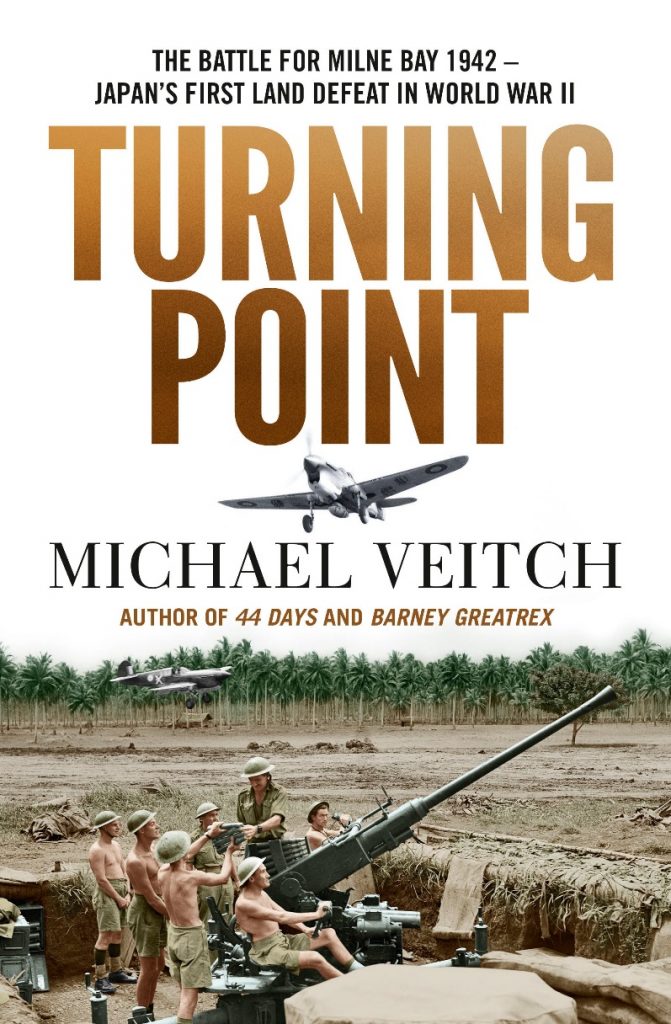This is another example of an Australian action that has been overshadowed by better-known military exploits.
The outcome saw the Japanese give up plans to invade Port Moresby by sea, and resort to an overland approach across the Owen Stanley Range via the Kokoda Track.

Paperback 336pp RRP $32.99
Michael Veitch has taken an unhurried approach to the theme of his work by devoting Part One to the geography, history and the personnel involved and the strategic importance of the south east tip of New Guinea. The 1942 activities of the Australian forces and the US engineers prior to the Japanese approach are elaborated in great detail. The construction of the Gurney Field strip saw the first use by the US of the steel Marston matting that was to be used so extensively for the remainder of the war.
After the Japanese learnt there was a ready-made airstrip ‘for the taking’, they rehearsed the marines in their invasion force in Rabaul Harbour on 22nd August, before a convoy headed for Milne Bay on the 25th. Coast watchers and aircraft gave early warning, but the inexperienced RAAF pilots achieved little with their bombing and were more successful with strafing runs.
Both sides had almost no current maps, and little information of the strength and disposition of their opponents. The Japanese lost many barges at Goodenough Island, but on the night of the 25th landed marines close to where they thought the airstrip was and the first (two) tanks on New Guinea soil. From then on it became a battle where the RAAF dominated by day: strafing causing massive damage to food, ammunition and fuel supplies; and the Japanese dominated at night: advancing and landing more barges and evacuating casualties. The individual battles are described in full, but unfortunately the inset map is too large a scale to show many of the features described. One Japanese Zero pilot captured was Petty Officer Enjii Kakimoto who later led the August 1944 Cowra breakout.
After a heavy Japanese aerial raid on the airfield on the 28th, the Kittyhawks withdrew to Port Moresby for safety. After an overnight refitting, they returning to continue their daytime harassment. After the Japanese had been reinforced by 800 troops, the final major battle was on the night 30/31 August at the incomplete No. 3 field (not the Japanese objective) where the Japanese continued charging an overwhelming array of defensive firepower. It was only after the last Japanese survivors had withdrawn by sea on 7th August that the Allies saw the unbelievable atrocities committed by their foes. Despite providing the first Allied land victory over the Japanese, military politics saw the Australian commander, Major General Cyril Clowes, sidelined for the remainder of the War.
This fascinating account includes relevant photographs, the Webb Report (on Japanese crimes), Sources and Acknowledgements, a Bibliography and a detailed Index. Veitch has a final word in his Epilogue that describes the sanitization of history to which the Japanese youth of today are presented. Is he repeating ‘History shows us the learn nothing from history’?
Reviewed for RUSIV by Neville Taylor, August 2019
Contact Royal United Services Institute about this article.






